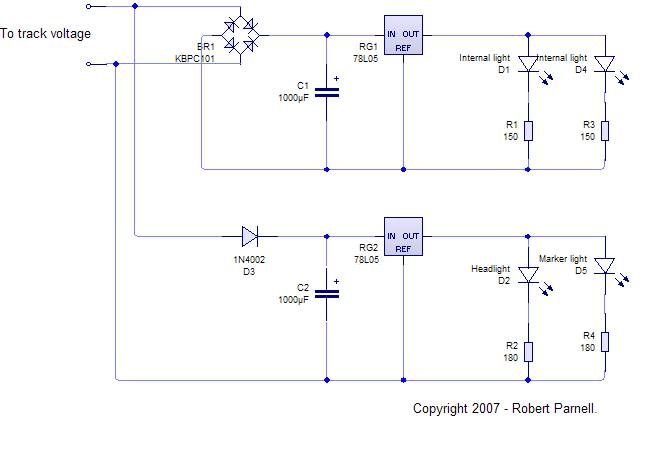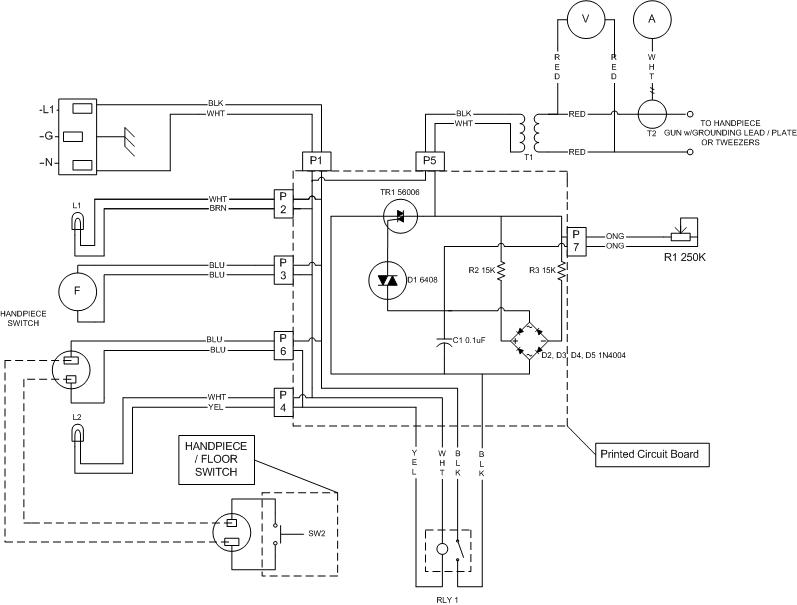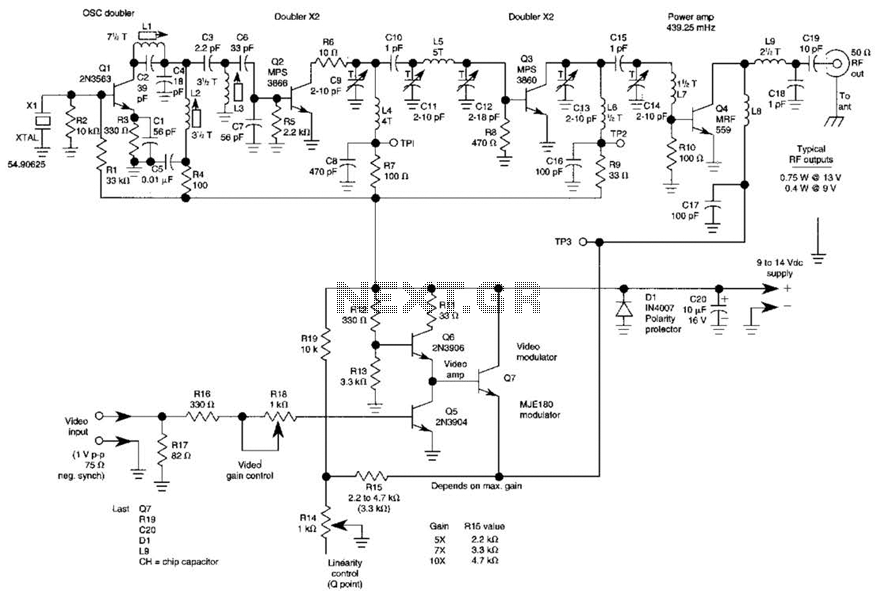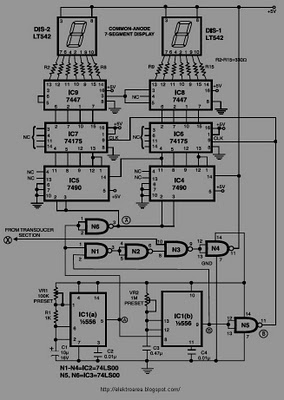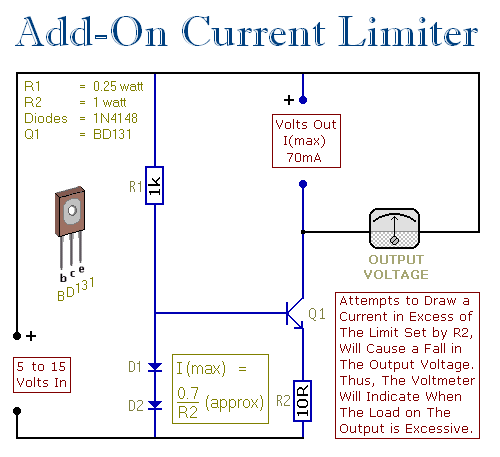
Electronic Gong Circuit
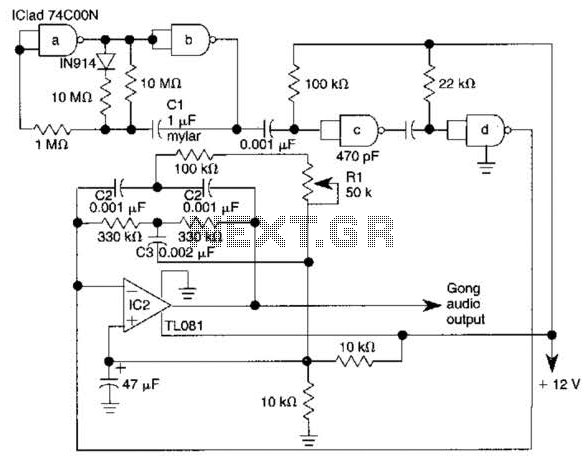
The electronic gong consists of an oscillator utilizing half of a 74C00 quad 2-input NAND gate, an active twin-T filter based on a TL081 operational amplifier, and an audio amplifier integrated circuit, such as the LM386N. Pulses generated by an astable multivibrator (IC1) trigger the twin-T active filter (U2) to resonate, resulting in a damped sinusoidal output. The capacitor CI adjusts the rate, while capacitors C2 and C3 modify the gong's frequency. The resistor R1 can be adjusted to achieve the optimal tone.
The electronic gong circuit operates by generating a sound through a combination of oscillation and filtering techniques. The oscillator, formed by the NAND gate, functions as an astable multivibrator, producing square wave pulses at a defined frequency. These pulses are then fed into the twin-T filter, which is designed to selectively allow certain frequencies to pass while attenuating others. The twin-T filter configuration consists of resistors and capacitors arranged to create a notch filter effect, enabling the production of a specific damped sinusoidal waveform that mimics the sound of a gong.
The TL081 operational amplifier serves as the active component in the twin-T filter, enhancing the circuit's ability to produce a clear and distinct tone. The output of the filter is then sent to an audio amplifier, such as the LM386N, which amplifies the signal to drive a speaker or other audio output device. This amplification stage is crucial for ensuring that the sound produced by the circuit is loud enough to be heard clearly.
The component values play a significant role in determining the performance characteristics of the electronic gong. Capacitor CI is responsible for setting the rate of oscillation, influencing how quickly the circuit produces sound. Capacitors C2 and C3 are pivotal in adjusting the frequency of the gong sound, allowing for customization based on user preferences or specific application requirements. The adjustment of resistor R1 is also essential, as it fine-tunes the tone quality, enabling the user to achieve the desired sound effect.
In summary, the electronic gong circuit is a sophisticated assembly of components that work together to create a unique sound. The careful selection and adjustment of each component ensure that the circuit can produce a range of tones and frequencies, making it versatile for various applications. The electronic gong is comprised of an oscillator (built around half of a 74COON quad 2-input NAND gate), an active twin-T filter (built around a TL081), and will drive an audio amplifier IC such as aii LM386N. Pulses from astable multivibrator ICl cause the twin-tee active filter U2 to ring, producing a damped sinusoidal output.
CI varies rate and C2-C3 vary gong frequency. Adjust Rl for best tone sound. 🔗 External reference
The electronic gong circuit operates by generating a sound through a combination of oscillation and filtering techniques. The oscillator, formed by the NAND gate, functions as an astable multivibrator, producing square wave pulses at a defined frequency. These pulses are then fed into the twin-T filter, which is designed to selectively allow certain frequencies to pass while attenuating others. The twin-T filter configuration consists of resistors and capacitors arranged to create a notch filter effect, enabling the production of a specific damped sinusoidal waveform that mimics the sound of a gong.
The TL081 operational amplifier serves as the active component in the twin-T filter, enhancing the circuit's ability to produce a clear and distinct tone. The output of the filter is then sent to an audio amplifier, such as the LM386N, which amplifies the signal to drive a speaker or other audio output device. This amplification stage is crucial for ensuring that the sound produced by the circuit is loud enough to be heard clearly.
The component values play a significant role in determining the performance characteristics of the electronic gong. Capacitor CI is responsible for setting the rate of oscillation, influencing how quickly the circuit produces sound. Capacitors C2 and C3 are pivotal in adjusting the frequency of the gong sound, allowing for customization based on user preferences or specific application requirements. The adjustment of resistor R1 is also essential, as it fine-tunes the tone quality, enabling the user to achieve the desired sound effect.
In summary, the electronic gong circuit is a sophisticated assembly of components that work together to create a unique sound. The careful selection and adjustment of each component ensure that the circuit can produce a range of tones and frequencies, making it versatile for various applications. The electronic gong is comprised of an oscillator (built around half of a 74COON quad 2-input NAND gate), an active twin-T filter (built around a TL081), and will drive an audio amplifier IC such as aii LM386N. Pulses from astable multivibrator ICl cause the twin-tee active filter U2 to ring, producing a damped sinusoidal output.
CI varies rate and C2-C3 vary gong frequency. Adjust Rl for best tone sound. 🔗 External reference
Warning: include(partials/cookie-banner.php): Failed to open stream: Permission denied in /var/www/html/nextgr/view-circuit.php on line 713
Warning: include(): Failed opening 'partials/cookie-banner.php' for inclusion (include_path='.:/usr/share/php') in /var/www/html/nextgr/view-circuit.php on line 713
